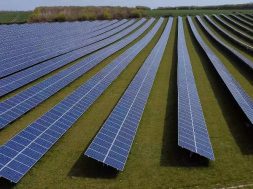
Clean Energy Associates release alarming stats on the solar industry – EQ
In Short : Clean Energy Associates has released alarming statistics regarding the solar industry, highlighting challenges and opportunities. The report underscores issues like supply chain disruptions, material shortages, and increased demand impacting solar projects globally. It also outlines strategies for resilience, emphasizing supply chain diversification, technology innovations, and collaboration between stakeholders. These insights provide a roadmap for navigating the industry’s complexities and steering it towards a sustainable, efficient, and resilient future.
In Detail : Clean Energy Associates (CEA) has published a new report looking into the high volume of PV module defects that have been discovered via the process of electroluminescence (EL) testing.
EL testing of more than 300,000 PV modules at 148 sites has shown that 83% of the modules had line cracks, 78% had a soldering anomaly, and 76% had complex cracks – many of which cannot be seen by the naked eye, and as such, pose a significant threat to the industry.
After conducting EL testing on 300,000 PV modules in the field, CEA has identified the most common defects and damages, including their causes and associated risks. The findings, which are shared in this report below, reveal that there are likely more defects in PV modules than the buyer might realise, and highlights what can be done to reduce this risk.
EL testing is a diagnostic technique used in the solar industry to detect defects in solar cells and modules. By passing a current through a solar module in a dark environment and capturing the emitted infrared light with specialised cameras, EL testing identifies issues such as microcracks, broken cells, soldering defects and inactive areas.
CEA has undertaken EL tests on modules in 16 countries and findings have shown that in many cases, defects in PV modules originate during the manufacturing process. These quality issues relate to the high number of inexperienced suppliers entering the market due to supply chain challenges.
These defects can also be exacerbated during shipping, handling and storage and modules might be subjected to incidents, such as being dropped or mishandled. Even if there’s no visible damage to the glass or frame, internal microcracks can form. Furthermore, CEA is seeing an increase in glass breakage due to glass-glass technology.
Microcracks can grow over the course of a module’s life, isolating part of a cell and reducing performance. In worst cases, this can lead to risks like module hotspots or under-performance of modules.
















